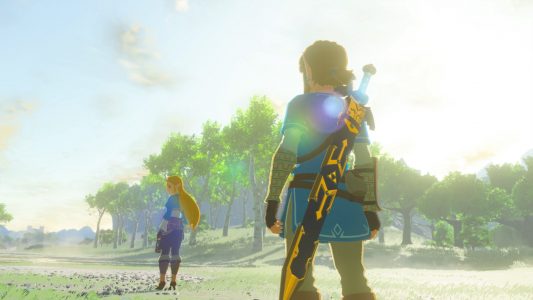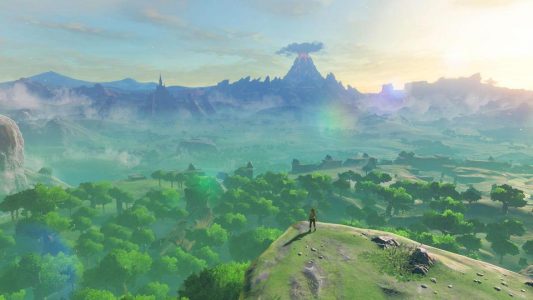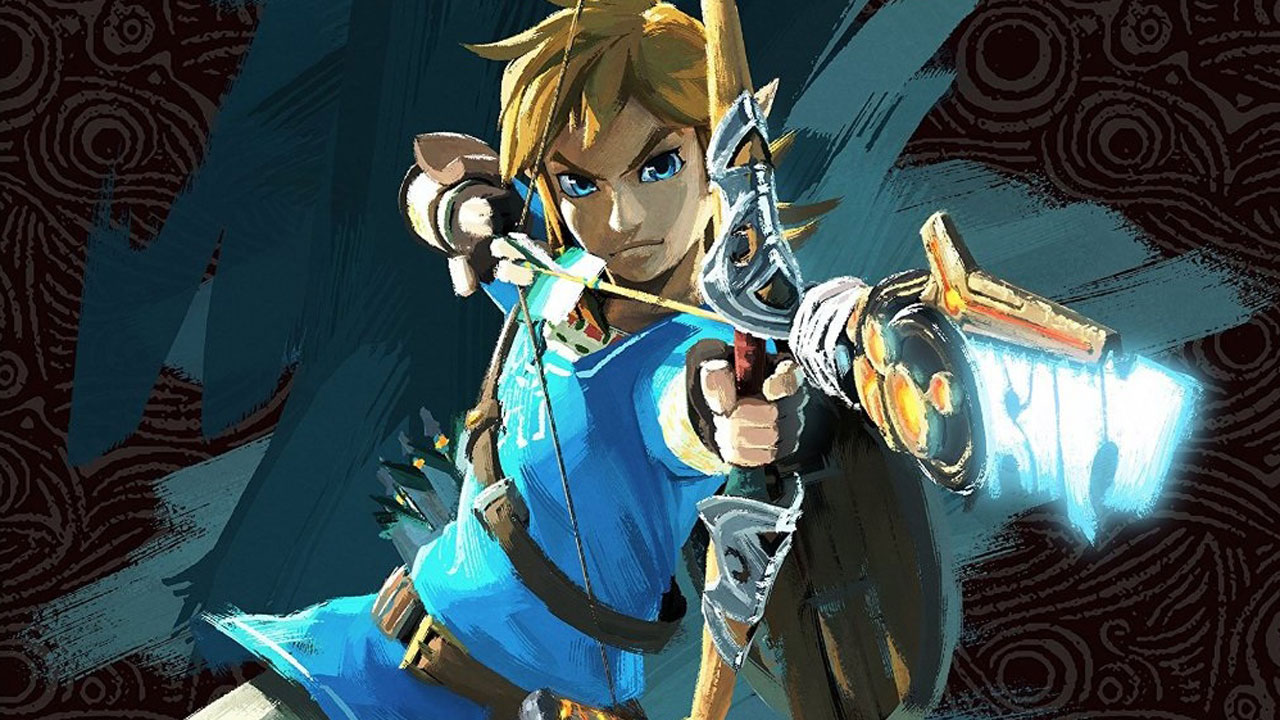The Legend of Zelda: Breath of the Wild is the closest realisation of what the first game on the NES was trying to achieve. There are very few open world games that I have played that feel as freeing and energetic, and while Zelda fans may find it a bit of a different game from what they are used to, Breath of the Wild combines the best elements of the franchise and mixes it all together with a beautifully-crafted open world.
Just exploring the massive world is incredibly satisfying. Piecing your way up a huge cliff just to see a gorgeous sunset at the top, or using your Shiekah Slate to pick out a tiny rock to paraglide down to. The open world setting fits very well with the feel of Zelda and I quickly found myself getting lost while hunting for shrines and towers.
Story
Instead of having a lengthy prologue or tutorial, the game starts with Link waking up in a mysterious place and picks up the Shiekah Slate, before setting out to the open world ahead of him. The story manages to keep a layer of mystery that keeps you wondering and wanting to learn more about what happened in the 100 years before Link’s strange awakening. The main quest has you searching for the Divine Beasts that each represents a different race that lives in Hyrule. Although the Divine Beasts dungeons are not as lengthy as what you might see in other Zelda games, they each have well-designed puzzles that have you move the Beast around to get to where you need to be.

The world
We’ve seen games with great worlds recently such as Final Fantasy XV and The Witcher 3, but we’ve never seen anything quite like this. Nintendo crafts the world that is your literal playground, overflowing with interactive pieces throughout. This entire world is open to you very early on in the game too. Although, if you are not dressed properly and venture into frozen or desert areas, Link will not survive for very long.
The world comes alive in other ways as well, with day and night cycles and thunderstorms and other natural issues. From meters that shows how much noise you are making from your footsteps, to the sometimes silly dialogue. It’s all showcased in Nintendo’s distinct style too.

Combat
Breath of the Wild’s combat may seem simple at first but it gets more challenging and complex as you learn more. Runes can be used in a fun during battle and Link has a few moves of his own. Dodging an attack at the right time lets you unleash a devastating flurry attack, which can hit a target multiple times, jump off heights and pull out your bow, letting you slow down time for a critical hit with better accuracy.
You’ll encounter different types of enemies across the world from bobolinks to lizalfos and mini bosses such as the Hinox and Stone Talus. But the main issue with the combat is that your weapons can break very easily and you could find yourself in a battle with no weapon. While this can get in the way of combat, you do get used to it after a couple of hours and it stops being a main issue with the game.

While Breath of the Wild is an amazing game, it still comes with its flaws such as the random frame-rate drops that you will encounter on both Wii U and Switch versions. While the Switch does have less than the Wii U version, it’s still noticeably there when in areas with a lot of grass and animals.
While the world does contain over 100 shrines (mini dungeons), it can take a while just to find one that’s not in a village, or near a stable, and can make the world feel empty if you are not exploring as much as the game demands. Overall, it is a great launch title for the Nintendo Switch but if you already have a Wii U, you are better of getting that version since there is not much of a difference between the two.

